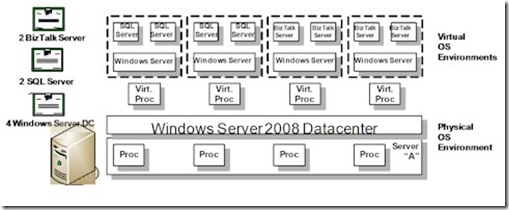One of the big motivations for starting this blog on ‘Dynamic Work’ was my observations of the parallels between the changing nature of how computers are and can work (more flexible, more modular, more dynamic) and how humans do. While organisations can change the processes, architecture, operations, etc. of both their IT systems and their people systems, one of the considerations that often gets it the way are commercial restrictions. In the human world, a classic example of this is union rules which constrain changes in work practice. In the IT world, an equally prominent constraint can be licensing restrictions on the technology.
And licensing considerations do hit one of the biggest technology opportunities to make systems more versatile and ‘dynamic’ – Virtualization. At the core, software companies have long struggled to figure out the most appropriate way to license their products. To buy just about anything, one needs a price per unit and then people decide how many units that they want to consume. In the world of software, it is hard to figure out what ‘unit’ to ‘count’. Companies have licensed by machine, by processor, by user, by transaction, by MIP, by hour and a whole host of other ways. Microsoft offers many of these alternatives in licensing its software (which makes for more choice, but adds frustrating complexity).
The new technology of ‘virtualisation’ introduces new challenges to how and what you ‘count’. The software doesn’t necessarily get ‘installed’ on a particular piece of hardware so you can’t count boxes. Furthermore, most licensing has some constraints on ‘moving’ the software (‘I’ll use this piece of software here for a little while and then when I am done, I hand it over to you to use for a while…’). These constraints can fly in the face of one of the great potential benefits of virtualisation which is dynamic load balancing that involves constantly moving software and workloads to systems best suited to handle them.
Microsoft has already pioneered what many analysts have praised as innovative and pro-customer licensing terms around virtualisation. It started a few years ago when it announced that multiple instances of the OS would be allowed with each purchase. But this past year, Microsoft extended the flexibility even further by (a) enabling application mobility for 41 Microsoft server applications under volume license agreements, and (b) Waiving the 90-day movement rule for eligible servers licensed under the Per Processor licensing model. This announcement is a big step forward for companies that want exploit virtualisation to dynamically manage a range of workloads with unprecedented versatility.
